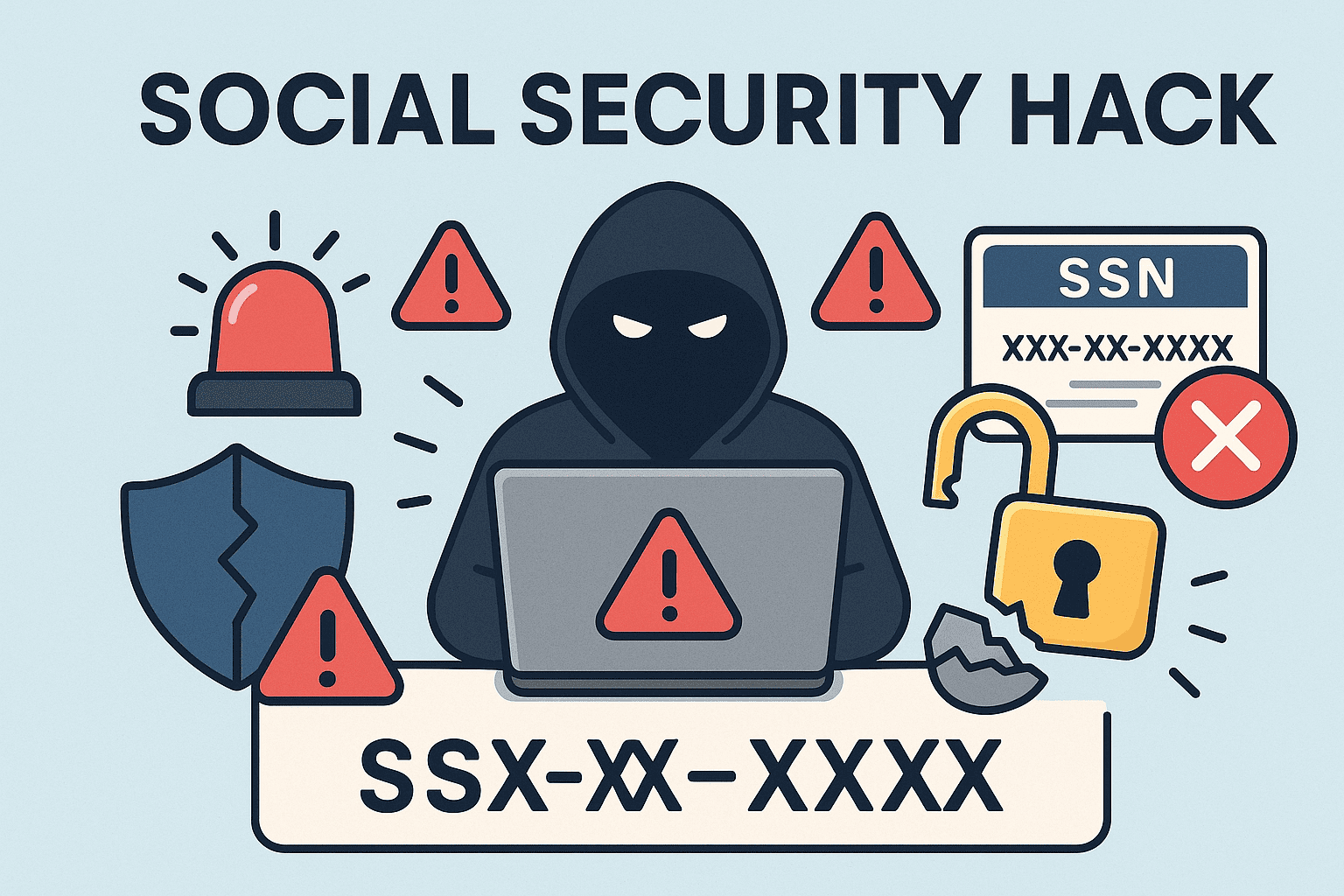Updated on October 8, 2025, by OpenEDR
Imagine waking up to find that your identity has been stolen—loans taken out in your name, your credit score ruined, and sensitive personal information sold on the dark web. Unfortunately, this nightmare is a reality for millions of people each year. One of the most common ways cybercriminals pull this off is through a social security hack.
Introduction: Why Social Security Hacks Are So Dangerous
A social security hack occurs when attackers steal Social Security numbers (SSNs) from individuals or organizations and use them for identity theft, fraud, or unauthorized financial activities. With your SSN, criminals can open bank accounts, file false tax returns, and even commit crimes in your name.
For IT managers, CEOs, and cybersecurity professionals, understanding how these hacks happen—and how to prevent them—is critical to protecting both personal and organizational data.
What Is a Social Security Hack?
A social security hack is any cyberattack or data breach that compromises Social Security numbers. Because SSNs are tied to tax records, credit reports, and personal identification, they are one of the most valuable pieces of data for cybercriminals.
Common methods include:
Data Breaches: Hackers target government agencies, hospitals, and corporations to steal large databases of SSNs.
Phishing Scams: Fake emails or texts trick individuals into providing their SSNs.
Malware Attacks: Malicious software harvests personal data from infected devices.
Dark Web Sales: Stolen SSNs are sold to identity thieves for profit.
Why Hackers Target Social Security Numbers
Social Security numbers are often described as the “keys to the kingdom” for identity theft. With just this number, hackers can impersonate victims and carry out fraud on multiple platforms.
Hackers use stolen SSNs to:
Apply for credit cards and loans.
File fraudulent tax returns for refunds.
Gain unauthorized access to medical care.
Commit employment fraud.
Open utility accounts or rental agreements.
👉 In short, a social security hack isn’t just a privacy concern—it’s a direct financial and reputational risk.
High-Profile Social Security Hacks
Several major breaches have exposed millions of SSNs to cybercriminals.
Equifax Breach (2017): Exposed 147 million records, including SSNs.
U.S. Government OPM Hack (2015): Compromised 21 million federal employee records.
Healthcare Sector Breaches: Hospitals and insurers are frequent targets due to rich databases containing SSNs.
These incidents show that even large organizations with advanced cybersecurity systems can fall victim to social security hacks.
Warning Signs That Your Social Security Number Is Compromised
If your SSN has been exposed, there are usually red flags. IT managers and individuals alike should stay alert for:
Unexpected changes in your credit score.
Debt collectors calling for unfamiliar accounts.
Being denied credit for no apparent reason.
IRS notices about multiple tax filings.
Medical bills for treatments you didn’t receive.
The sooner these warning signs are caught, the better your chances of minimizing damage.
How to Protect Against a Social Security Hack
1. Strengthen Cybersecurity Measures
Use endpoint security tools to detect malware.
Keep all systems updated with the latest patches.
Encrypt sensitive databases containing SSNs.
2. Educate Employees & Users
Train staff to spot phishing emails.
Implement strict data-handling policies.
Use two-factor authentication (2FA) for sensitive accounts.
3. Monitor Your Credit & Identity
Regularly check your credit report for unusual activity.
Sign up for ID theft protection services.
Set fraud alerts or credit freezes if necessary.
4. Respond Quickly to Breaches
Report compromised SSNs to the FTC.
File an Identity Theft Report.
Notify banks and creditors immediately.
Business Risks of Social Security Hacks
For companies handling sensitive employee or customer data, a social security hack can be devastating.
Consequences include:
Financial Penalties: Regulatory fines for failing to protect sensitive information.
Reputational Damage: Loss of customer trust.
Legal Liabilities: Victims may sue for damages.
Operational Disruptions: Recovery efforts consume time and resources.
Organizations must adopt Zero Trust architecture, encryption, and advanced monitoring to minimize exposure.
The Future of Identity Security
As cyberattacks grow more sophisticated, traditional SSN-based identification systems are being questioned. Alternatives like biometric authentication, blockchain identity systems, and token-based verification are gaining traction.
Still, until a universal replacement emerges, SSNs will remain a prime target—making cybersecurity vigilance non-negotiable.
FAQs: Social Security Hacks
1. What should I do if my Social Security number is stolen?
Immediately report it to the FTC, place a fraud alert with credit bureaus, and monitor financial accounts.
2. Can you change your Social Security number after a hack?
In extreme cases, yes—but the Social Security Administration only allows it under strict conditions.
3. How do hackers use stolen Social Security numbers?
They commit identity theft, open credit lines, and file fraudulent tax returns.
4. How common are Social Security hacks?
Millions of SSNs are exposed every year through large-scale data breaches.
5. What’s the best way for businesses to prevent a hack?
Adopt layered security with encryption, access controls, employee training, and continuous monitoring.
Conclusion: Take Action Before It’s Too Late
A social security hack isn’t just another cybersecurity issue—it’s a direct threat to individuals and organizations alike. Hackers exploit SSNs to steal identities, drain finances, and ruin reputations. For IT managers, CEOs, and cybersecurity leaders, the key lies in prevention, monitoring, and rapid response.
👉 Don’t wait until a breach affects your organization. Take proactive steps today and protect your network with advanced cybersecurity tools.
Start your protection journey now: Register Here
